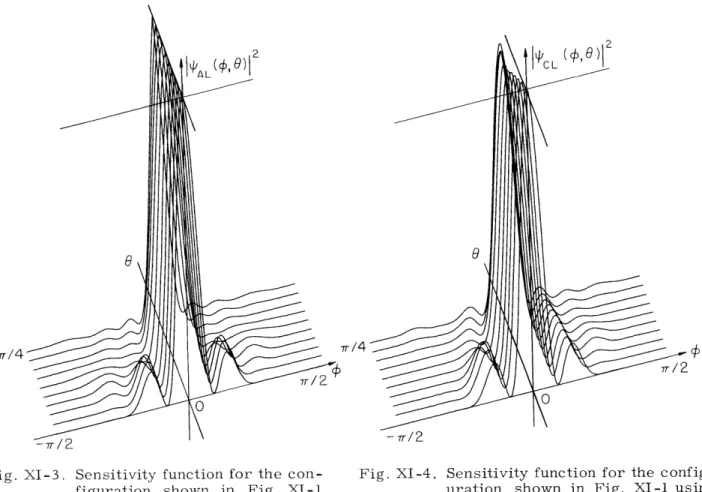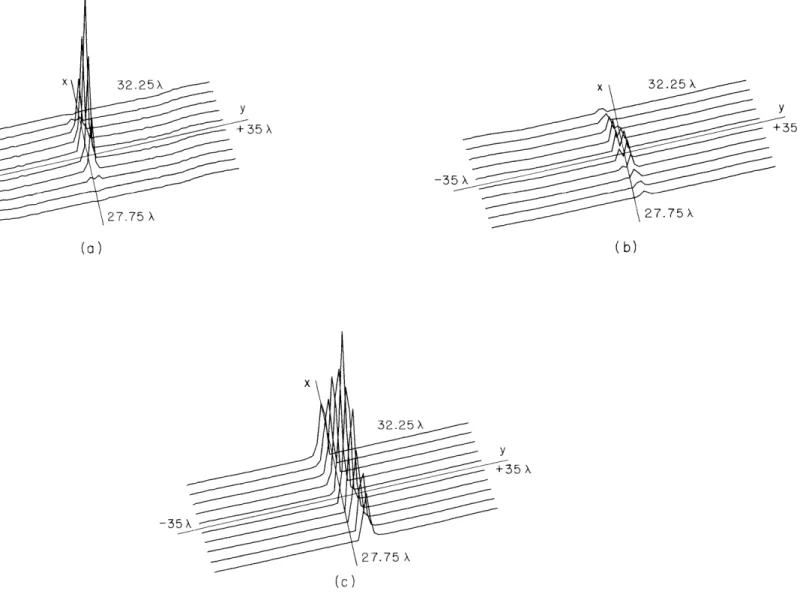XI. COGNITIVE INFORMATION PROCESSING
Academic and Research Staff Prof. M. Eden Prof. J. Allen Prof. B. A. Blesser Prof. T. S. Huang Prof. F. F Lee Prof. S. J. Mason Prof. W. F. Schreiber Prof. D. E. Troxel Prof. I. T. Young Dr. R. R. Archer R. J. B. R. J. A. A W. D. L. R. E. E. L. R. E. C. B. W. P. Bochner Bowie Boyle Brenner Ellis, Jr. Filip Goldstein Grossman Hartman A. Henckels Dr. G. H. Granlund Dr. J. E. Green Dr. E G. Guttmann Dr. K. R. Ingham Dr. J. I. Makhoul Dr. D. M. Ozonoff Dr. D. Sankowsky Dr. O. J. Tretiak F. X. Carroll Graduate Students M. Hubelbank P. D. Henshaw T. Kitamura J. W. Klovstad G. P. Marston G. G. Matison G. Poonen N. Rashid R. Singer D. G. Sitler D. A. Fay Deborah A. Finkel C. L. Fontaine C. C. Hsieh E. R. Jensen C. Hehring D. E. Robinson J. M. Sachs Sandra A. Sommers J. S. Ventura A. A. Smith R. D. Solomon J. H. Stahler W. W. Stallings W. D. Stratton K. P. Wacks D. L. Shelan T. R. Willemain Y. D. Willems K. H. Yung
A. ARRAY TRANSDUCERS FOR MEDICAL USES OF ULTRASONICSt 1. Introduction
Ultrasonic systems of various types have been used in clinical practice for several years. Although with their aid the problem may be attacked in many different ways, with almost all of them an attempt is made either to take an internal measurement or to produce an image of soft tissue without the use of damaging radiation such as x rays or of internal probes. Essentially all systems depend on some form of reflection of the ultrasonic signal. In the early designs it was assumed that the reflecting sur-faces were flat and perpendicular to the beam of ultrasonic energy. Such assumptions were unacceptable, of course, so many of the newer systems use a technique called "compound scanning" which is somewhat more tolerant to the curvature of the surfaces that are being examined. Compound scanning does not completely eliminate the
prob-lems caused by surfaces that were not perpendicular to the axis of the ultrasonic transducer because it tends to only display surfaces that are tilted up to a few degrees.
To overcome some of the limitations of previous systems, the approach described
This work was supported principally by the National Institutes of Health (Grant 5 P01 GM14940-05).
tThis work was supported in part by the National Institutes of Health (Grant NS08571).
here makes use of an array of transducers that can not only be made tolerant to tilted surfaces, but can also detect the angle of the tilt.
2. Technique
Consider the system shown in Fig. XI-1. Here a large plane transducer is driven with a pulse to generate a plane wave. This wave is reflected off the target and is received by the spherical receiver. If the target is of nonzero length and is not spher-ical, the energy reflected from it will be concentrated onto some limited area of the receiver. We would then expect that it would be possible to determine the angle at which the target is tilted.
AL (01 0)
x3
L TARGET11K
- T/2 TRANSMITTER t RECEIVER COMPOSED OF 2N+1 ELEMENTS Fig. XI-1.A plane transmitter is pulsed to
produce a plane wave that is re-flected off a target of length L, tilted by an angle c. The reflected energy is measured at an angle 6 by an element of a circular re-ceiver.
Fig. XI-2.
Reflected signal as a function of angle for targets tilted from 0 to T/4 and
L = k.
As a test of the potential of this method of angle detection, a hypothetical two-dimensional situation was numerically evaluated. The target was assumed to be flat
and of finite but small length, leading to the reflection pattern indicated by Eq. 1. (See Fig. XI-2.) The receiver was assumed to be composed of a finite number of elements. Two tests were then made. In the first the correlation function was computed between the signal received from a rotated target and the signal from a target parallel to the transmitter, as indicated by Eq. 2. In the second test the autocorrelation function of the signal received from a tilted target was calculated by evaluating Eq. 3.
QPR No. 101
L]
[11
(XI. COGNITIVE INFORMATION PROCESSING)
sin [ (sin + sin (-e)(
AL(~, 6) = k (1)
sin
#
+ sin ((-O)where L is the length of the target, K includes all effects of attenuation and target absorption, ( is the angle at which the target is tilted, and 0 is the angle of the received signal. X is the wavelength
n=N 2 c (0,) - A , ) AL ,0±r + 2) L n=-N (2' n=N n=N Ec L 0, - 6 + n + 2) n=-N n=-N n=N 2 A (,e)= E AL AL ' +n) L n=-N (3) n=N n=N EA= AZ , AL A ' 0 + n=-N n=-N
As can be seen in Figs. XI-3 and XI-4, the 3-dB point corresponds to a 150 rotation of the received signal or a tilt of 7. 5' of the target. Thus there would appear to be no fundamental limitation at this level which would lead to the downfall of the entire system.
To carry the evaluation a step further, and a little closer to reality, the receiver was flattened out and focused. This was done in two dimensions as shown in Fig. XI-5. In such an implementation, the same transducer would be used for both transmitter and receiver. In transmit mode, all elements would be excited in parallel with a short duration pulse. In receive mode, a delay would be introduced in the output of each receiver element to equalize the total delay between the processor and the target. Effectively this means that the array produces a plane wave on transmit and is focused to some point during receive.
The received signal is then correlated by multiplying the received and delayed signals by the numerical value of the signal that would be received from a tilted target. The resulting signals are then summed and sampled at the time corresponding
7T/2
-r/2
7/4
O
Fig. XI-3. Sensitivity function for the con-figuration shown in Fig. XI-1 using Eq. 3.
Fig. XI-4. Sensitivity function for the config-uration shown in Fig. XI-1 using
(XI. COGNITIVE INFORMATION PROCESSING) INPUT Y COEFFICIENT
I
-OUTPUT --1~-TARGET L ____ I __wIII- TRANSCEIVER COMPOSED OF 2N+1 ELEMENTS CENTERED AT (0,0)
Ai=AL (@, tan- 1
di = MAX (02 +o- id)2) - 2 ( - id)2 -N<i<N
Fig. XI-5. An array of elements is driven in parallel during transmit. During receive, the array is focused by the use of elec-trical delays and is made sensitive to a target at a specific angle (c).
to the complete system time delay. The time sampling is done to improve the distance resolution. This entire process is represented by Eq. 4.
i=N LR,
#,,
L, , x O ( t ' x y ) = AL( i=-N sin (Wsin ) rL', i, x, y, = sin A L' (c tan-1 y -xid) t + h t x2 + (y -id) - x c / -1 YO - id . = tan i x where QPR No. 101 23935 X X 355 27.75 X 27.75X (a) (b) 32.25X -35 27.75 X (c)
Fig. XI-6. Sensitivity functions for the arrays shown in Fig. XI-5. (a) Both target and receiver angles
zero. (b) Only target tilted Tr/6. (c) Both target and receiver tilted at r/6. For L = L' = 4X,
itc
ft
<n = 50, w = X, d = X, h(t) =
(XI. COGNITIVE INFORMATION PROCESSING
is the angle of target tilt that is being tested ' is the actual angle at which the target is tilted L is the assumed length of the target
L' is the actual length of the target
x and Yo are the x and y coordinates of the focal point of the array
r L', i, x, (t) is the waveform received from a target at location x, y of length L' and tilted
4.
The waveform is received at the i element of the arrayc is the velocity of sound
W is the width of each receiver element d is the distance between elements.
Equation 1 was used as the directional function and a triangular waveform was used as the system timpulse response. Figure XI-6 then shows the results of eval-uating Eqs. 4. Figures XI-6a and XI-6c shows the system response when the actual target angle and the assumed angle are the same. When the angles are different as in Fig. XI-6b, the response is greatly reduced, as can be seen.
3. Conclusion
The system that has been described here appears to be capable not only of detecting a target that is tilted with respect to the transmitter of an ultrasonic imaging system but can even measure the angle at which the target is tilted. This capability should allow the creation of an even more powerful system that could integrate all of the echoes from
a large curved target into a display that would show all parts of the target rather than only those which are nearly parallel to the ultrasonic transducer.
M. Hubelbank, O. J. Tretiak


